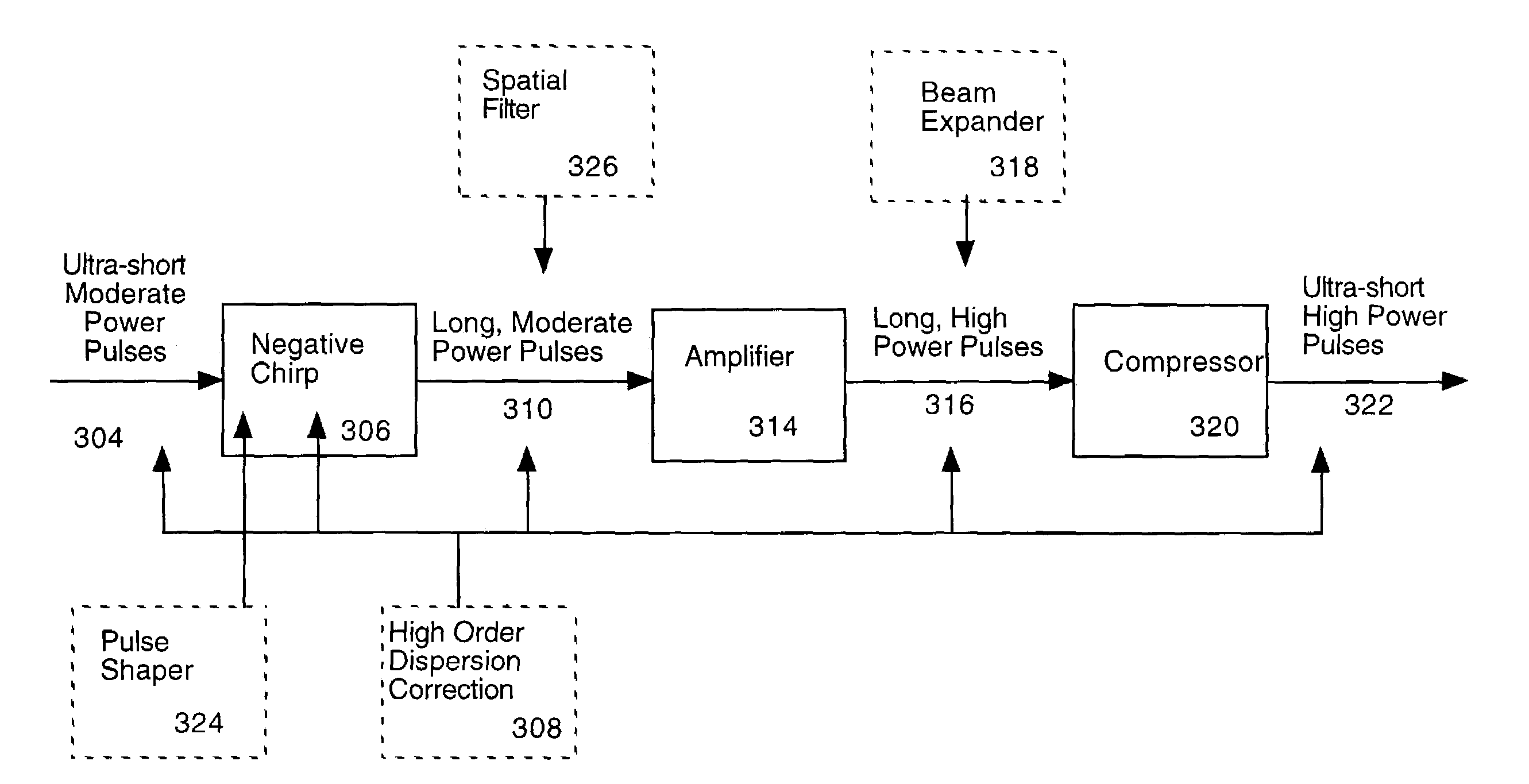Downchirped pulse amplification
a pulse compressor and downchirped technology, applied in the direction of pulse automatic control, electromagnetic transmission, transmission, etc., can solve the problems of easy acquisition, easy alignment of pulse compressors, and virtually lossless transparent materials, so as to avoid thermal distortion effects, accurate dispersion compensation, and avoid average power typical of grating pulse compressors
- Summary
- Abstract
- Description
- Claims
- Application Information
AI Technical Summary
Benefits of technology
Problems solved by technology
Method used
Image
Examples
Embodiment Construction
[0024]FIG. 1 is a flow diagram illustrating the downchirped pulse amplification (DPA) technique of the present invention. In step 102, the initial, low energy, ultrashort pulse is generated. A typical length of such a pulse is 10–20 femtoseconds, and a typical energy is 10−11 to 10−7 Joules. In step 104 the pulse is stretched using negative group velocity dispersion, resulting in a much longer, negatively chirped pulse. The length of the pulse might be on the order of 1 to 100 picoseconds. In step 106, high-order dispersion correction is applied. This step is not required, but is desirable. In practice, steps 104 and 106 are performed simultaneously using a combination of optical elements in an order that can often be interchanged.
[0025]In step 108 broad-band amplification is applied to the stretched pulse. The energy of the pulse would be on the order of 10−7 to 10+6 Joules after amplification. Step 110 accomplishes beam expansion, if desired. Beam expansion is useful for preventin...
PUM
 Login to View More
Login to View More Abstract
Description
Claims
Application Information
 Login to View More
Login to View More - R&D
- Intellectual Property
- Life Sciences
- Materials
- Tech Scout
- Unparalleled Data Quality
- Higher Quality Content
- 60% Fewer Hallucinations
Browse by: Latest US Patents, China's latest patents, Technical Efficacy Thesaurus, Application Domain, Technology Topic, Popular Technical Reports.
© 2025 PatSnap. All rights reserved.Legal|Privacy policy|Modern Slavery Act Transparency Statement|Sitemap|About US| Contact US: help@patsnap.com



